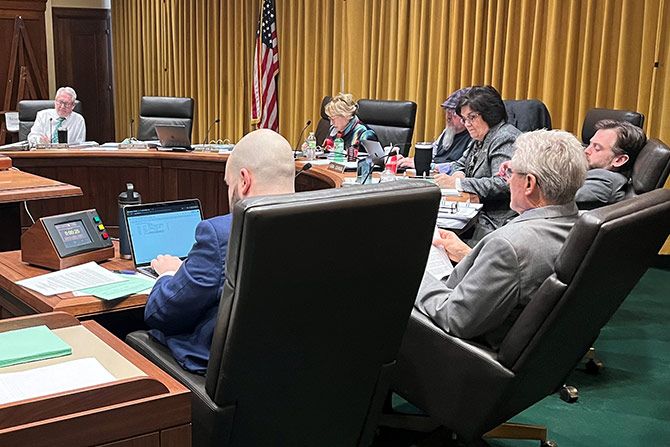In late December 2023, the IRS announced its Voluntary Disclosure Program for employers that claimed and received an Employee Retention Credit (ERC) refund but later determined they were not eligible. The Voluntary Disclosure Program follows the IRS’ announcement in October 2023 that it would allow employers with submitted—but not yet paid—ERC claims to withdraw their filings without penalty.
The ERC & IRS Enforcement
Sometimes called the Employee Retention Tax Credit (ERTC), the ERC is a complex, refundable tax credit intended for employers that continued paying employees during the COVID-19 pandemic when either (a) their operations were fully or partially suspended due to governmental orders, or (b) they experienced a significant decline in gross receipts as compared to 2019. The credit is available for both 2020 and 2021, but the credit limit is calculated differently each year, as follows:- For 2020, the credit is equal to 50% of up to $10,000 of qualified wages (including health plan expenses) paid to employees from March 12, 2020, through Dec. 31, 2020 (the maximum credit being $5,000 per employee in 2020).
- For 2021, the credit is equal to 70% of up to $10,000 of qualified wages (including health plan expenses) paid to employees in any quarter from Jan. 1, 2021, through Sept. 30, 20211 (the maximum credit being $7,000 per employee per quarter).
Withdrawal Program
Under the withdrawal program, the IRS will accept an employer’s request to withdraw its ERC claim under certain circumstances. The withdrawal program is for employers with an ERC claim that has been filed but not yet paid by the IRS (or those that have received a check but have not yet cashed or deposited it). If an employer requests to withdraw its claim, it will be treated as though it were never filed, and the IRS will not impose penalties or interest.Voluntary Disclosure Program
The IRS’ Voluntary Disclosure Program is available to employers that have already received an ERC credit or refund if:- The employer is not under criminal investigation and has not been notified that the IRS intends to commence a criminal investigation;
- The IRS has not received information from a third party alerting the IRS to the employer’s noncompliance;
- The employer is not under an employment tax examination by the IRS for any tax periods for which the taxpayer is applying for the Voluntary Disclosure Program; and
- The employer has not previously received notice and demand for repayment of all or any part of the claimed ERC.
Audit Risk & Preparation
Upon the expiration of these programs on March 22, we expect the IRS to closely review the following ERC eligibility standards in an audit:- Qualification. This is an important “all or nothing” issue. If the IRS is able to determine that an employer was not qualified for the ERC, no ERCs would be available to claim, and an employer would be required to return all of its received refunds, plus interest and penalties. The IRS may analyze the following eligibility factors, among others:
- The number of full-time employees of the employer and any related employers. The ERC allows “large employers” to only treat certain wages as “qualified” for purposes of the ERC: wages paid for the time employees were not providing services for the employer (i.e., furloughed employees who were still paid).2 All employees of any related entities must be aggregated for this purpose.
- The COVID-19-related governmental orders that caused the employer’s full or partial suspension of operations. For this purpose, only formal orders, proclamations, or decrees from a governmental entity may be considered, and the order must relate to the suspension of the employer’s business.
- Whether the employer’s partial suspension of operations was more than “nominal.” For this purpose, a portion of an employer’s business operations will be deemed to constitute more than a nominal portion of its business operations if either (a) the gross receipts from that portion of the business operations is not less than 10% of the total gross receipts (using the gross receipts from the same quarter in 2019), or (b) the hours of service performed by employees in that portion of the business is not less than 10% of the total number of hours of service performed by all employees (determined using the number of hours performed by employees in the same quarter in 2019).
- Quantifying the amount of ERCs. The amount of the ERCs claimed, and the veracity of each category of ERCs claimed, will also be important. We anticipate the IRS may review, among others, the following eligibility factors:
- The amount and calculation of the qualified wages and health care expenses paid to employees.
- Confirmation that the qualified wages were paid to employees, and not independent contractors.
- Whether the wages were paid to impermissible “related individuals.” Importantly, wages paid to “related individuals” may not be taken into account in determining the qualified wages for the ERC. For this purpose, “related individuals” include individuals who bear a relationship to an individual who owns, directly or indirectly, more than 50% of the outstanding equity of the company. Relevant relationships include: children, siblings, parents, and individuals with the same principal place of abode as the taxpayer (excluding spouses). The IRS clarified that an individual’s ownership is determined with application of the attribution rules of Code Section 267(c). Under Code Section 267(c), an individual has “constructive ownership” of (i.e., is deemed to own) a company’s equity that is owned by the individual’s family member (including his siblings, spouse, ancestors, and lineal descendants).
- Whether the employer claimed the same wages for other tax credit programs. For example, an employer that received a forgivable loan under the Paycheck Protection Program (PPP) is not permitted to earn ERCs on the same dollars as wages paid under the PPP.
Proposed Federal Legislation Impacting ERC Claims
At the time of writing, The Tax Relief for American Families and Workers Act of 2024 had passed in the U.S. House of Representatives and was headed to the U.S. Senate. If passed by the Senate and signed into law, the bill would significantly impact an employer’s ability to claim the ERC going forward. Specifically, the legislation would:- Retroactively accelerate the deadline for amended returns to Jan. 31, 2024. Under current law, taxpayers have until April 15, 2024, to file amended 2020 returns and April 15, 2025, to file amended 2021 returns.
- Extend the IRS’ statute of limitations for assessment of ERC claims to six years.
- Increase the penalty for aiding and abetting the understatement of a tax liability by a COVID-related “promoter.”


Jesse D. Sitz and Morgan L. Kreiser are partners at Baird Holm law firm. Sitz represents clients with respect to general corporate matters, estate planning and probate matters, federal and state tax planning issues, and tax-exempt matters. Kreiser represents clients with respect to all aspects of ERISA compliance and employee benefit programs, including qualified retirement plans, deferred compensation arrangements, equity compensation incentives, and health and welfare benefits. For more information, contact Sitz at (402) 636-8250 or jsitz@bairdholm.com or Kreiser at (402) 636-8206 or mkreiser@bairdholm.com.
Endnotes
- IRS Notice 2021-65 terminated the credit for Q4 of 2021, except for certain “recovery startup businesses.”
- For purposes of the ERC for 2020, “large employer” means an employer with more than 100 full-time employees in 2019. For purposes of the ERC for 2021, “large employer” means an employer with more than 500 full-time employees in 2019.









